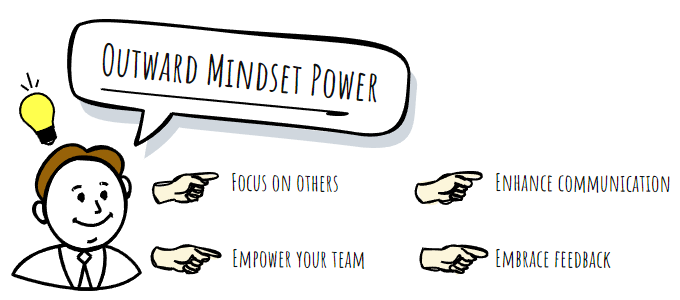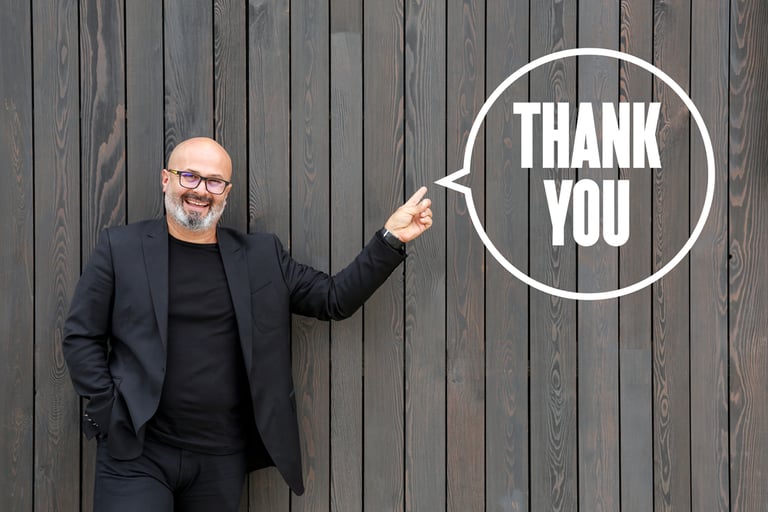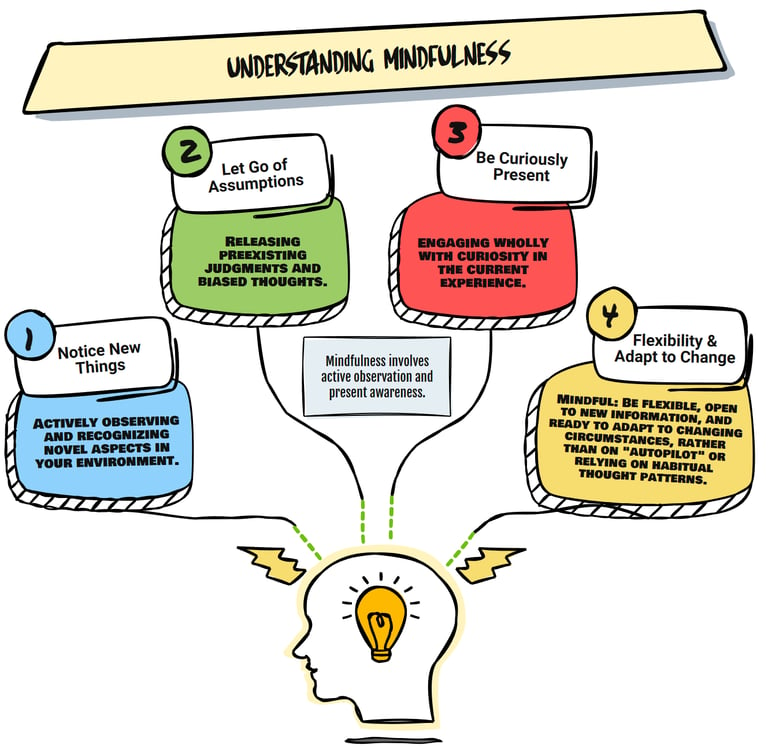A short story about mindfulness 2.0
Contrast John, the mostly mindless executive, with Kevin, the Director of Operations for a construction company. Kevin received his 360 feedback also, but it's a lot different than Johns.
For example, he gets high marks as a collaborator and his approach to the use of information. He's not afraid of new ideas or possibilities and often allows his team to share their ideas, putting them into practice.
He knows the best ideas come from those doing the work on the front lines. He recognizes as a business they must continually create new categories for survival.
This is an example of mindfulness 2.0.
Kevin doesn't jump to conclusions or make faulty comparisons. He constantly, like a child, categorizes and re-categorizes, labeling and relabeling. Mindfulness isn't a unnatural pose or incense. It's a "curious presence with a willingness to challenge your assumptions."


Mindfulness
Mindlessness
John, an executive at a prestigious medical group, recently received his 360 review from his team, peers, and leaders. The results aren't good. He received consistent low scores for lacking emotional intelligence type skills.
Like his determination to commit to one use of information, not willing to see other possibilities. He often becomes trapped by absolute categories.
And, he is constantly making faulty comparisons with a rigid reliance on old categories. Plus, he seems to operate in "automatic" mode in meetings and conversations.
This is classic mindlessness.
Mindlessness costs employers and our economy billions in lost revenue every year. One of the most blatant places we see mindlessness at play is on our roads in the United States. People get in their vehicles and mindlessly drive while they think about everything but the road.




Together, we’re passionate about helping people awaken to a brighter, more playful life by embracing Mindfulness 2.0 which is "being curiously present and brave enough to challenge our own assumptions."
Mindfulness has become a buzzword, an almost fanatical movement, embracing a California (West Coast) outlook that men living an unrealistic, sheltered life in the Far East, know things you do not.
Nothing could be further from the truth. Can you achieve mindfulness through meditation and far east religious practices, sure, but those things are NOT mindfulness, but rather the ways some people choose to pursue it.
The old way seeks to embrace the emptying of the mind.
We promote the Mindfulness 2.0 view - yes, the definition we identified thanks to the work of Dr Laura J Langer, Dr Elisha Goldstein, Marilee Adams and many others.
It is the filling of our minds with positive things, embracing a heightened awareness in every aspect of life, not only meditation.
As long as there have been minds on the planet, there has been both mindfulness and mindlessness. To be mindful is to be aware of your awareness.
Mindfulness is applicable to anything and everything you do in life, not just to a mat, unnatural body pose, or incense and chimes.
It's relevant in the morning when you wake up, throughout your day, in little things like eating, your approach to the day, walking, prepping for a meeting, in conversations, relationships, and well into the night, when you finally go to sleep.
Mindfulness embraces a learner's mindset (open to possibilities, even failures) VS a judger's mindset (constantly sets limits on self and others).
Mindful people are the highest achievers, most satisfied in their relationships, find joy in whatever they do in life. They are also the best leaders regardless of their leadership style, and they possess more energy in life.



